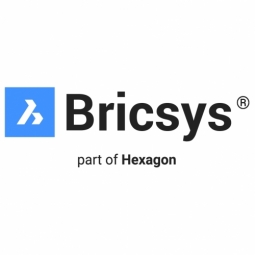Technology Category
- Infrastructure as a Service (IaaS) - Virtual Private Cloud
- Wearables - Virtual Reality Glasses, Headsets & Controllers
Applicable Industries
- Electronics
Applicable Functions
- Maintenance
- Product Research & Development
Services
- System Integration
About The Customer
Q8, or Kuwait Petroleum Italia S.p.A, is a prominent operator in the Italian fuels distribution market. The company manages a network of about 2,800 service stations across Italy. To keep their facilities up-to-date, Q8's in-house development team works with a large number of external companies. This collaboration involves not only architectural design but also the creation and modification of electrical, electronic, and mechanical systems. The company was in search of a CAD solution that could effectively meet their extensive and specific requirements, which they found in BricsCAD.
The Challenge
Kuwait Petroleum Italia S.p.A, operating under the brand name 'Q8', is a leading player in the Italian fuels distribution market. The company operates a network of approximately 2,800 service stations across Italy. Given the vastness of their operations, Q8 is constantly engaged in the redesign and maintenance of these service stations. This work involves not just architectural design, but also the creation and modification of electrical, electronic, and mechanical systems. To manage this demanding task, Q8's in-house development team collaborates with a large number of external companies. However, they faced challenges in finding a CAD solution that could effectively meet their extensive and specific requirements.
The Solution
Q8 trialled numerous solutions in their quest for a versatile CAD platform that could align with their philosophy and remote working practices. They also needed a solution that offered flexible licensing and .dwg compatibility. After an exhaustive search, they found BricsCAD to be the only CAD solution that met all their criteria. BricsCAD's low cost of purchase and ownership allowed Q8 to acquire several dozen licenses within a limited budget. The software's familiar and intuitive user experience ensured a quick transition to full productivity for the team of design consultants. BricsCAD's compatibility with virtual computer systems and the standard .DWG format delivered by their design consultants was a significant advantage. Furthermore, the ability to automate parts of the design process, such as job accounting and creating supplier code-specific equipment purchase lists, enabled the team to meet tight deadlines faster.
Operational Impact
Quantitative Benefit

Case Study missing?
Start adding your own!
Register with your work email and create a new case study profile for your business.
Related Case Studies.

Case Study
Remote Temperature Monitoring of Perishable Goods Saves Money
RMONI was facing temperature monitoring challenges in a cold chain business. A cold chain must be established and maintained to ensure goods have been properly refrigerated during every step of the process, making temperature monitoring a critical business function. Manual registration practice can be very costly, labor intensive and prone to mistakes.

Case Study
Predictive maintenance in Schneider Electric
Schneider Electric Le Vaudreuil factory in France is recognized by the World Economic Forum as one of the world’s top nine most advanced “lighthouse” sites, applying Fourth Industrial Revolution technologies at large scale. It was experiencing machine-health and unplanned downtime issues on a critical machine within their manufacturing process. They were looking for a solution that could easily leverage existing machine data feeds, be used by machine operators without requiring complex setup or extensive training, and with a fast return on investment.

Case Study
Cloud Solution for Energy Management Platform-Schneider Electric
Schneider Electric required a cloud solution for its energy management platform to manage high computational operations, which were essential for catering to client requirements. As the business involves storage and analysis of huge amounts of data, the company also needed a convenient and scalable storage solution to facilitate operations efficiently.

Case Study
Leveraging the IoT to Gain a Competitive Edge in International Competition
Many large manufacturers in and outside Japan are competing for larger market share in the same space, expecting a growing demand for projectors in the areas of entertainment, which requires glamor and strong visual performance as well as digital signage that can attract people’s attention. “It is becoming more and more difficult to differentiate ourselves with stand-alone hardware products,” says Kazuyuki Kitagawa, Director of Service & Support at Panasonic AVC Networks. “In order for Panasonic to grow market share and overall business, it is essential for us to develop solutions that deliver significant added value.” Panasonic believes projection failure and quality deterioration should never happen. This is what and has driven them to make their projectors IoT-enabled. More specifically, Panasonic has developed a system that collects data from projectors, visualizes detailed operational statuses, and predicts issues and address them before failure occurs. Their projectors are embedded with a variety of sensors that measure power supply, voltage, video input/ output signals, intake/exhaust air temperatures, cooling fan operations, and light bulb operating time. These sensors have been used to make the projector more intelligent, automatically suspending operation when the temperature rises excessively, and automatically switching light bulbs. Although this was a great first step, Panasonic projectors were still not equipped with any capability to send the data over a network.









